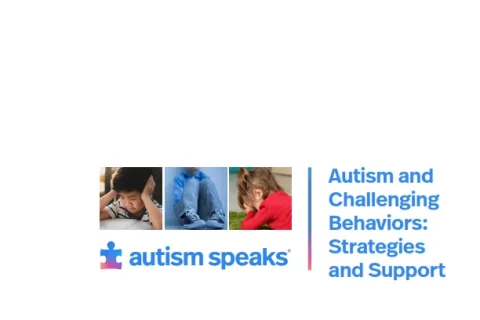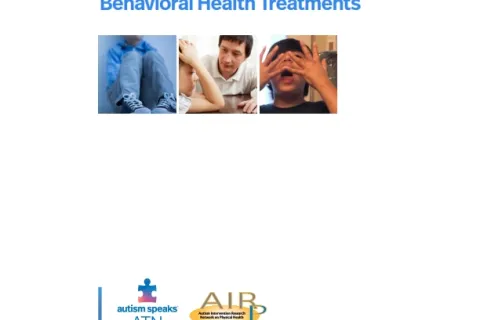Ideas for Preventing Challenging Behavior at School
School Community Tool Kit
The School Community Tool Kit s full of information to help teachers and all members of the school community best support students with autism. Below is an excerpt on challenging behaviors.
Ideas for Preventing Challenging Behavior at School
- Recognize behavior as communication. Try to understand the communicative intent of the behavior and teach the student appropriate ways to communicate, and give them positive reinforcement when they are successful.
- Establish a classroom behavior plan for all students to promote expected behaviors.
- Develop an individualized Positive Behavior Support Plan for each student with autism.
- Provide behavior specific feedback and ample praise and reinforcement.
- Catch your students being good and reward! (For example, ‘It was wonderful how nicely you walked in the hall and stayed in line. Give me a high five!’)
- Provide organization and support transitions.
- Communicate expectations, use daily and short term schedules, warn of changes to routines or personnel, prepare the student for unexpected events such as fire drills, field trips or field day, substitutes, etc.
- Offer choices and provide the student some control - within reason (for example, ‘Which one should we work on first, math or reading?’ or ‘Do you want to do 10 math problems, or 15 math problems?’) Even if the student does not have a true choice, he can feel that he has some input and is not directed throughout every step of his day.
- Consider sensory needs and interventions.
- Respect the student’s personal space - and teach him to recognize and respect the personal space of others.
- Provide a home base or safe place where the student feels safe and can regroup, calm down, or escape overwhelming situations or sensory overload such as a separate room, a tent or corner within a classroom, or a particular teacher’s or administrator’s classroom or office. Proactively teach the student how and when to use this strategy, using visual supports or cue cards as needed.
- Practice flexibility and self-monitoring - start this when the student IS calm and help to provide a framework for what ‘calm and ready to participate’ actually is.
- Utilize breaks as a way to return to a calm state or as a reward for ‘good working’, but be watchful of how and when breaks are given. Providing a break in the middle of an outburst during a less-preferred activity may help to build that negative behavior, since it becomes a strategy for the student (for example, ‘If I scream, I get to avoid math and sit on the bean bag!’). Teach the student to request a break before he acts out, using an appropriate visual cue, whether that is raising his hand and asking or using a visual aide like the one below.
- Provide communication options and seek to give the student an opportunity to express emotions, confusion or his perspective.
- Teach contingencies and waiting strategies. Out and About offers a variety of simple strategies such as: 1. Countdown (5, 4, 3, 2, 1) 2. First, Then 3. A “WAIT” cue card that can be implemented in a variety of settings
- Evaluate behaviors that need to be changed, considering the factors in place before the behavior occurred, the details of the behavior itself, and the events that followed—talk to others to gain their perspective, and develop an understanding of the function of the behavior (what purpose did it serve?) so that a replacement behavior or strategy might be developed. Enlist the support of behavior specialists in analyzing behaviors that need addressing.
Read the full list of strategies and learn other ways to support students with autism in the Autism Speaks School Community Tool Kit.





